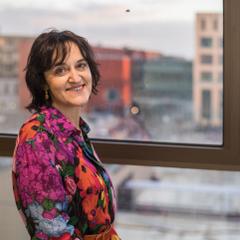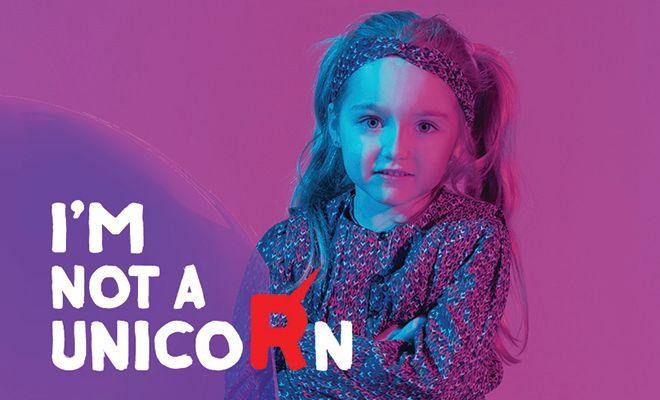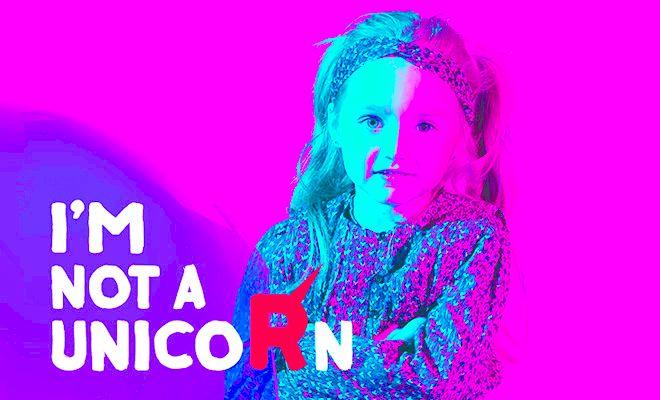At UZ Leuven various teams work on rare diseases. These are diseases that, as per the official definition, less than 5 in 10,000 persons suffer from. In Leuven there are centres for inflammatory systemic diseases (LeUZis), metabolic diseases, neuromuscular diseases, immunodeficiencies, hereditary heart dieases, human genetics … Professor Hilde Van Esch works as a clinical geneticist and researcher in the Centre for Human Genetics (CME - Centrum Menselijke Erfelijkheid) on rare genetic disorders.
Wide range
It concerns a wide range of rare disorders. Professor Van Esch: “We do work on hereditary disorders, genetic syndromes, mental impairment … A lot of these disorders are monogenous. This means that we can pinpoint one defective gene or chromosome that is responsible for the disorder.”
It is important to raise awareness for these problems. Because these people are not unicorns. They exist and their issues are real. Prof. dr. Hilde Van Esch
Prof. dr. Hilde Van Esch
The past years, genetic technology has moved forwards by leaps and bounds. “In the past we could only check gene per gene and see what was wrong. This is difficult for disorders or diseases where the cause could be in several genes. Thanks to the new techniques we can now read the complete genetic code, including what lies in between the genes.”
20.000 genes
A gigantic leap forwards, but the work of the clinical geneticists is far from done. “Just because we can read everything, it doesn't mean we can interpret what we see. Out of the approximately 20,000 genes, we know of 7,000 what they do. The rest, we still have to discover”, professor Van Esch says. This requires, in the first place, a lot of international collaboration. There are for example tools to find geneticists that are following a patient with the same gene defect as your own patient. “You can then start to compare the clinical presentation and you can link a 'new' gene to a 'new clinical presentation'. This has led to the discovery of a couple of new genes at the Centre for Human Genetics. And that type of research you can't do on your own. Through a lot of collaboration, we are learning to better understand the human genome.”
Even if one day we have a diagnosis for all rare genetic diseases, the work of geneticists will not stop. “You may have a diagnosis, but then what? For now, we have no way of curing rare genetic disorders. But a diagnosis can still be very valuable. The parents of our patients have often already been on an 'diagnostic oddysey'. They've been to see so many doctors, have undergone so many tests, that they are happy to have a diagnosis, however difficult that may be. A diagnosis opens doors to a better support framework and government support and allows a better follow-up of the patients. We can compare with other patients from across the world, in literature ... Waht's more, for young parents or brother and sisters it is important to know what their own risks are should they want children.”
Potential treatments
In addition we are working hard on finding potential therapies. “We are working on a number of syndromes, such as the Rett Syndrome or the MECP2 duplication syndrome. We try to understand what goes wrong in the brain and try to find ways of reparing the protein deficiency or excess in the brain. Also the CRISPR-Cas technique, which can modify DNA very accurately, is very promising for a lot of genetic disorders.”
Not a unicorn
Apart from the clinical and scientific challenges that doctors within this domain have to contend with, it is also a difficult situation for patients to handle. “There is the cumbersome search for a diagnosis, the lack of treatments, but also that, in a manner of speaking, you are the only one in Belgium to be confronted with this problem. It is very difficult for patients with a rare disease to connect anywhere. It's more difficult to join up with fellow sufferers. Which is why it is even more important to raise awareness for these problems. Because these people are not unicorns. They exist and their issues are real.”
Support the rare diseases foundation
Support research and tailored care for patients with rare diseases. Your support for this research can really make a difference.

